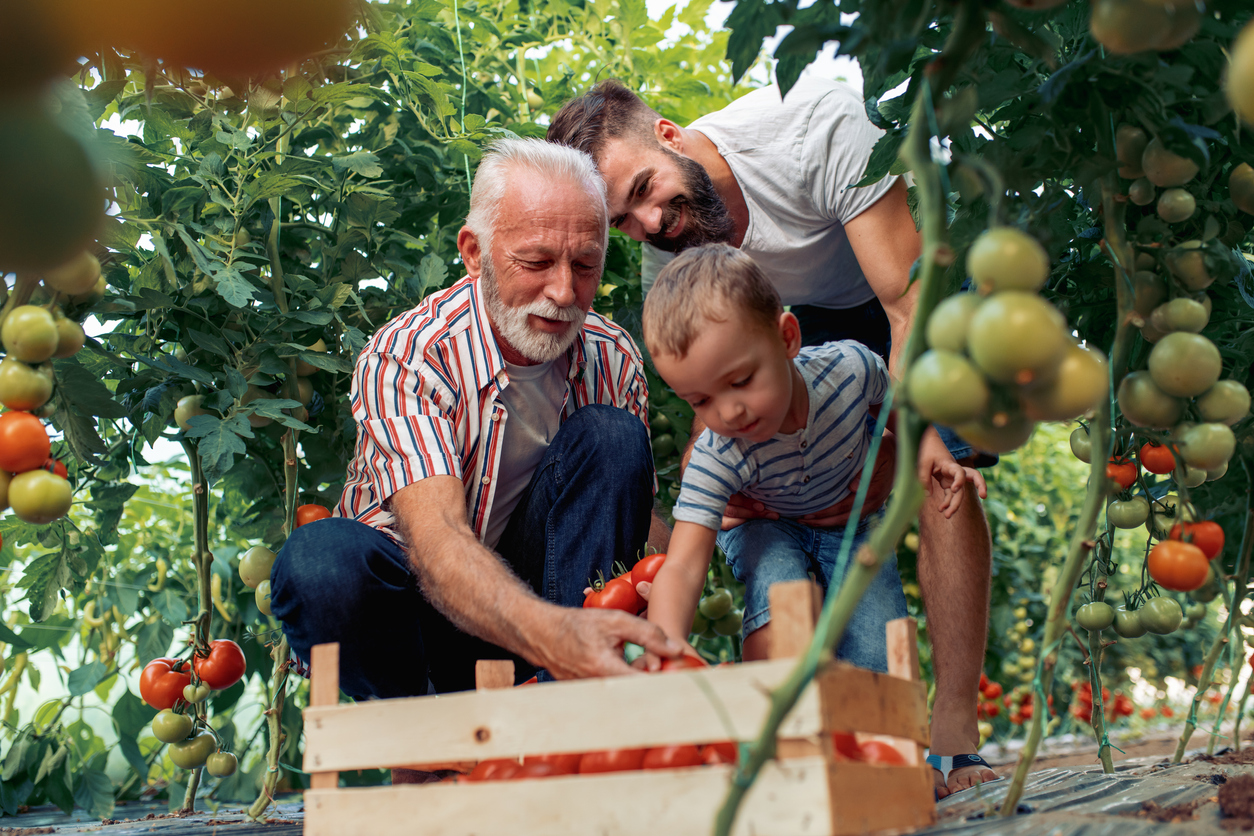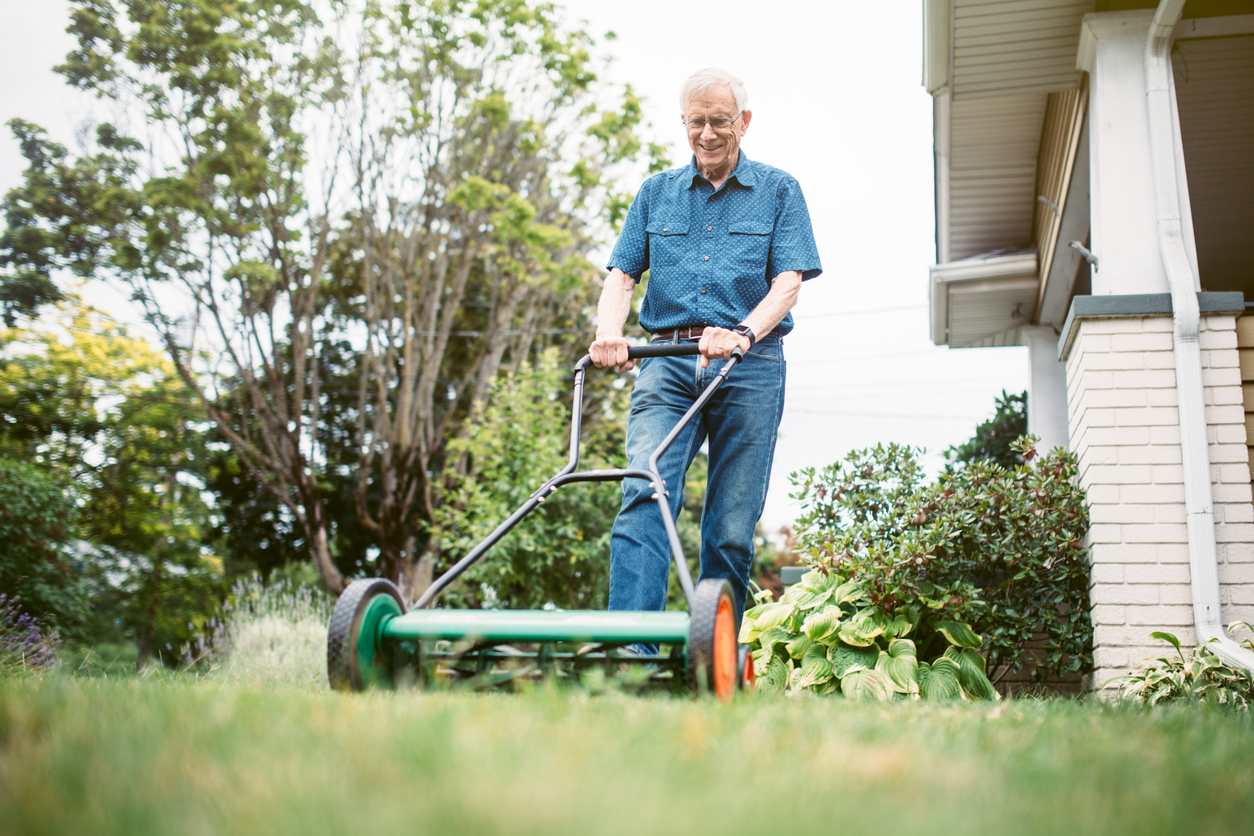

We may earn revenue from the products available on this page and participate in affiliate programs. Learn More ›
Eco-Conscious Meets Common Sense
We may not imagine our senior family members having much in common with today’s youthful environmental activists. After all, the responsibility for climate change lies largely (if unwittingly) with recent generations.
Yet many common practices popular in our grandparents’ and great-grandparents’ day were highly eco-conscious, even if they didn’t conscientiously think of them as such. They simply considered their daily actions sensible and money-saving.
Read on for some easy-to-adopt old-school ideas in various aspects of everyday life. Green movement giants like Greta Thunberg and Luisa Neubauer would probably approve.
Eat Like Our Elders

Our grands and great-grands cooked and ate at home pretty much exclusively. Us? Every time we grab takeout, we’re bombarded with excess packaging, much of it non-recyclable. Ordering delivery is worse, since the person at the door with dinner most likely burned fossil fuel to get there.
In addition to making our meals at home, here are some other age-old eco-friendly food practices:
- Grow our own. Gardens are not a new idea, and they became very popular during World War I with “victory gardens” that helped prevent food shortages. Today, homegrown fruits and veggies can be a small victory for the earth, especially if sustainable techniques, like limiting chemical pesticides and fertilizers, are employed.
- Can it. What to do with that bumper crop? Preserve it—just like granny did with her yummy pickles and jams. Home canning is a process that takes a dedicated afternoon or more, and may not easily fit today’s hectic schedules. However, many types of produce can be easily frozen or dried, retaining nutrients and flavor.
- Pack lunch. Our elders likely brought their midday meal to their job. Let’s follow suit, ideally by using up leftovers, so not a morsel is wasted. And while BYOL may have been called “brown bagging” back in the day, we can go even greener with a reusable lunchbox, reusable containers, and cloth napkins.
RELATED: How to Replace (Almost) All of the Paper Products in Your Home
Wear It Out

Without the seemingly endless array of clothing options we have now, generations past had little choice but to wear clothes until they were worn out, and even salvage parts for future needs. Revive this concept to limit landfill fodder. Here are a few ideas:
- Forgo fast fashion. Clothing that practically falls apart the second it goes out of style is an environmental faux pas. These brands typically target budget-conscious young people, and that’s sad since it’s youth who’ll inherit the earth’s eco-woes. Rather than be a fast fashion victim, buy classic pieces made from durable materials, mend them when necessary, and cut them into cleaning rags when they’re totally trashed. C’mon, let’s be done with jeans torn by machines and beautifully hand-patch our favorite pairs!
- Waste not, want not. This phrase, popular during the Great Depression, was deeply ingrained in our elders. Take the cue when it comes to reusing aluminum foil, salvaging yogurt tubs as storage containers, and putting twist ties, rubber bands, spray bottles, and other components of commercial products to further use.
- Recognize repurposing potential. When a household item isn’t beyond repair, see what you can salvage for a DIY fix or craft project. Tap your ingenuity and you’ll find functions for the parts of broken small appliances, furniture, lamps, office equipment, and more.
RELATED: 16 Insanely Clever Ways to Reuse Household Junk
Keep It Old-School Simple

Folks didn’t deal with built-in obsolescence generations ago, and seniors are spot-on when they say: “The more basic, the better!”
- Blow off bells and whistles. Everyday items—notoriously, appliances—are often hyped as “new and improved,” but our elders had washing machines, fridges, and stoves for years, even decades. Unless the new-fangled features are truly game changers, we’re likely better off skipping the upgrade—and so is the planet. Need more incentive? Consider that the more bells and whistles, the more parts there are that can break.
- Rely on push power. Not every tool or machine has to guzzle gas, electricity, or batteries. Use a push mower and a rake to tidy up a small yard like our grandparents did and we can skip the gym.
- Spurn superfluous packaging. Who needs fancy wrapping on grooming products, pre-portioned snack foods, reams of cardboard and protective “peanuts” on small electronics? To avoid packaging hijacking: 1) Buy generic or gently used goods. 2) Get refills for everything from cleaning products to cosmetics. 3) Shop locally so that items needn’t be swathed and padded to survive the onslaughts of shipping.
RELATED: Online Shoppers: Here’s What to Do With All Those Cardboard Boxes
Have Good Old-Fashioned Fun

Riding a bike, flying a kite, playing ball in the yard—that’s what older folks did for fun. They also visited nearby friends and family, sitting on the stoop, sharing a meal, shooting the breeze. Such simple pleasures have little to no impact on the planet, so give ’em a try. Here are some more ideas for old-fashioned fun.
- Find a useful hobby. Our elders spent leisure hours making stuff. Crafting functional and beautiful objects is entertaining as a process and rewarding in the results. Use salvaged items for DIY creations—a birdhouse built from reclaimed wood, a quilt stitched from old clothes, even a ukulele made from an old cookie tin—to protect the planet one impressive project at a time.
- Consolidate your screens. Back when TVs were the ultimate in high tech, a fortunate family had one—just one! A record 53.6 million metric tonnes (Mt) of electronic waste was generated worldwide in 2019, up 21 percent in just 5 years, according to the United Nations’ Global E-waste Monitor 2020. That number may reach 74 Mt by 2030. Plus, both sleep and sex experts advise against having a television in the bedroom, so becoming a single-TV household is worth considering. For all electronics, it’s smart to check the manufacturer’s or retailer’s recycling policy (go to the Electronics Take Back Coalition for more info and tips).
RELATED: 10 Things to Know About Disposing of Old Electronics
Travel Sustainably

Pandemic-related cabin fever may make a real vacation feel like a necessity. But travel can have a negative impact, burning fuel while traveling and using valuable resources once at a destination. Think sustainability when planning your sojourn, so that it protects the environment and supports community growth. A few planet-positive tips:
- Minimize fossil fuels. Travel by train, bus, or ship, which is typically less harmful to the environment. If you drive, consider renting a hybrid vehicle, and choose nonstop flights if you fly. Takeoffs and landings create most of a plane’s carbon emissions.
- Sustainable stays. Stay in hotels that have sustainability initiatives such as recycling, energy-efficient lighting, and low-flow toilets.
- Explore by foot. Walk, bike, and use public transportation as much as possible when you reach your destination, and carry a trash bag to pick up litter left by folks less responsible than you.
